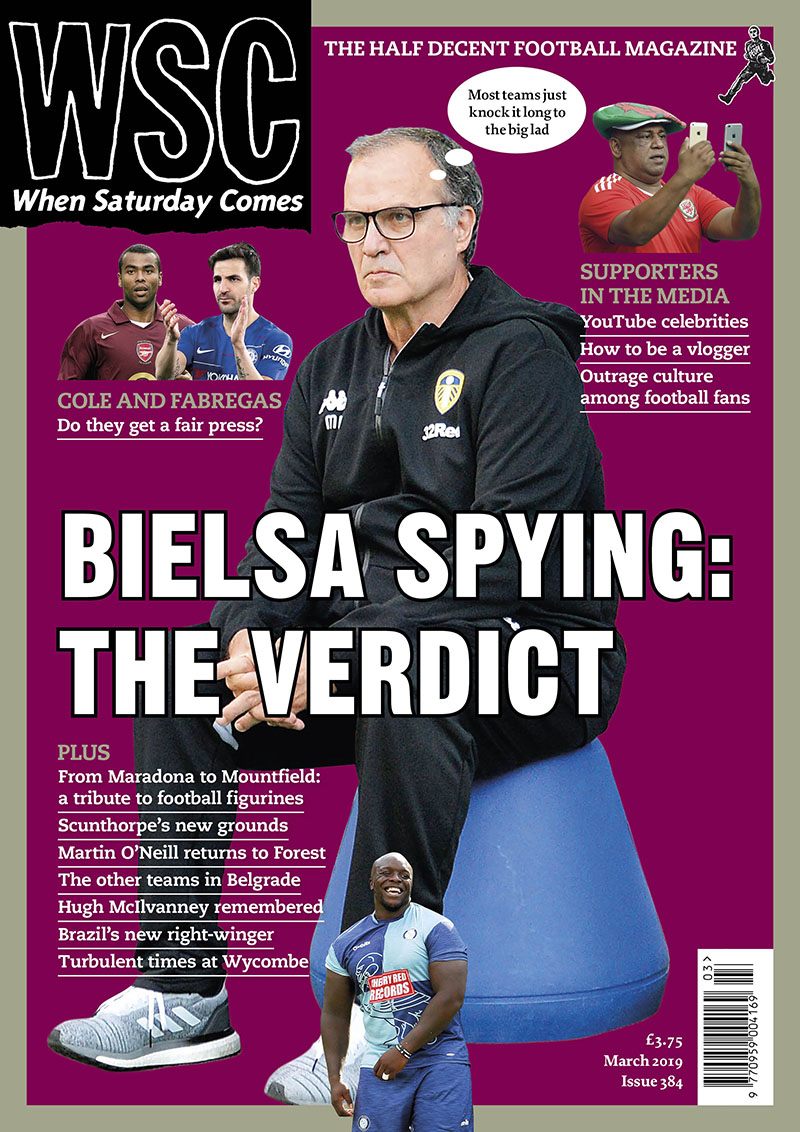Search: 'nicknames'
Stories
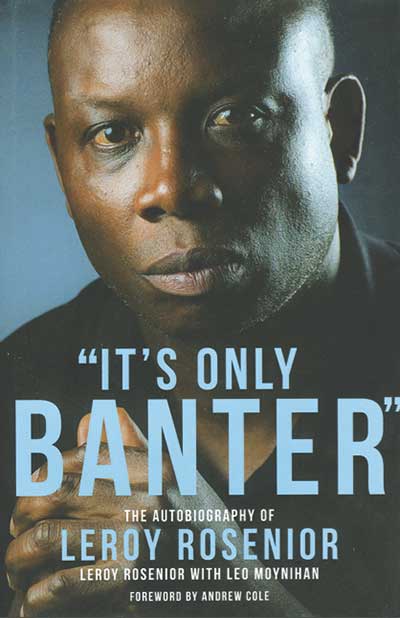
with Leo Moynihan
Pitch Publishing, £16.99
Reviewed by Chris Lewis
From WSC 365, July 2017
Buy the book
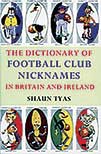 In
Britain And Ireland
In
Britain And Ireland
by Shaun Tyas
Paul Watkins, £19.95
Reviewed by Roger Titford
From WSC 319 September 2013
Shaun Tyas opens a new area in the examination of the minutiae of football culture. We’ve had stadiums, haircuts, kits, programmes, even Subbuteo; why not club nicknames? I would not have thought that it was an overly promising proposition but by dint of thorough desk research, extensive use of Wikipedia and taking the whole of the British Isles (including Isle of Man) as his canvas he generates over 350 pages of entries. He quotes a beautiful 19th-century aphorism – “a nickname is a biography in a word” – as a kind of justification for the study. Not only do so many clubs share the same nickname (I note to my surprise 11 cases of the Royals) but some clubs have many nicknames.
The main entertainment value lies in the archaic and the unofficial nicknames rather than the official and the well-known stories. To give an idea of the scope here are all the nicknames he found associated with Bristol City: Babes, Cider Army, City, Eighty-Twoers, Reds, Robins, Slave Traders, Turnips and Wurzels. As you might well imagine a number of these have been bestowed by fans of rival clubs and are sourced from a 2003 fans’ survey. Old football annuals and cigarette cards provide much of the source material.
Tyas has tackled his subject more from the top down – that is using official and often national sources, rather than from individual club histories and fan interviews. The inevitable and forgivable consequence is some omissions, common to the first edition of any dictionary. For instance, Reading have also been known as the R’s which has mutated into URZ and been in common usage over the past decade; the apparently unknown derivation of Spanners (a Charlton nickname for Millwall) dates to a spanner-throwing incident at Elm Park in August 1995.
Small gaps perhaps but Tyas has approached his task in a determinedly scholarly way with a full complement of appendices, indices, bibliography and cross-references that allow the reader to skip easily around the main body of the text. If that were not sufficient he offers a detailed four-step classification of nicknames into 50 categories so that in “name-based on locality/human history/language/proverbial sayings” you will find “The Bairns” (Falkirk) and three possible derivations thereof.
There are times when one could feel that this is a lightweight subject taken rather too seriously but then nobody nowadays would dismiss the 1960s folklore work of Peter and Iona Opie on children’s nursery rhymes and playground games which at the time may have appeared inconsequential. Moreover, while Tyas is methodical and, as far as I can tell, factually very sound, he writes with real joy and positivity about his chosen subject. This dictionary is an entertaining volume to dip into and there cannot be a fan who would fail to learn something of interest or amusement. I’d never heard of the Old Farm derby (Norwich v Ipswich) or this neat, modern biography in a word: Jackburn for Blackburn.
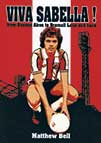 From Buenos Aires to Bramall Lane and back
From Buenos Aires to Bramall Lane and back
by Matthew Bell
ACM Retro, £12.95
Reviewed by Sam Kelly
From WSC 315 May 2013
Today, Alejandro Sabella wears an Argentinian FA baseball cap to work, and is probably the international football manager most people would like to take under their arm and cuddle. He wasn’t always a softly spoken, grandfather-like figure, though. In 1978, he was part of a transfer saga which transformed British football. Sabella’s move from River Plate, where he was a fringe player, to Sheffield United is less well known than those of Ricardo Villa and Osvaldo Ardiles to Tottenham Hotspur (from Racing and Huracán, respectively). Viva Sabella! tells the story of how Sheffield United manager Harry Haslam brokered the Spurs deals, while making sure to return from his post-World Cup trip to Argentina with a player of his own.
The book goes into rather more detail about the 1978 World Cup than it really needs to, as it does with Estudiantes de La Plata’s Copa Libertadores and Intercontinental Cup triumphs in the late 1960s (Sabella managed Estudiantes later in life, winning the Libertadores himself in 2009, but wasn’t connected to them at that time). Not all of the Argentinian sections are quite on song – the stadium in which the author claims Estudiantes played home matches in the late 1960s wasn’t opened until 2003 – and on a couple of occasions he attributes derisive interpretations to Argentinian nicknames for teams or people which are in fact meant fondly.
Unfortunately, we can only guess as to why Haslam was happy to let Tottenham in on the Ardiles and Villa deals with seemingly nothing to gain for himself – clearly football in the late 1970s was a different world. Antonio Rattín, who had a fixer’s role in the transfers, is remembered exclusively in Britain for his red card against England during the 1966 World Cup. That makes it interesting to see him portrayed as the pleasant and charming gentleman he has a well-earned reputation for being in Argentina.
There are cameos from Carlos Bilardo, Don Revie and Juan Sebastián Verón among others and a good summary of Sabella’s playing time in England; he impressed on a personal level but his team-mates didn’t hit the same heights for Sheffield United and the club were relegated to Division Three in his first season. He then had a brief spell at Leeds United before returning to Argentina, where he played a few matches for the national team. Sabella’s life on his return home is well treated, especially his coaching and managerial career as assistant to Daniel Passarella at River Plate, Argentina and Uruguay, and his step up to the number-one spot first with Estudiantes and then as manager of Argentina.
Although Sabella’s name is in the title, and his face looks out from the cover, this isn’t really a book about him – it is more to do with the difficulties players can run into when moving to a new country and culture. It also as a testament to Harry Haslam, a man whose vision of the direction football was going in proved correct, even if it didn’t benefit his club.
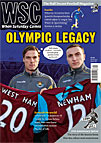 Paul Giess worries that due to administrative failure vast amounts of football merchandise will shortly be out of date
Paul Giess worries that due to administrative failure vast amounts of football merchandise will shortly be out of date
Unlike many competitions around the world South Africa’s Premier Soccer League welcomed February’s midweek FIFA international schedule with open arms. March sees a crucial Africa Cup of Nations qualifier against current holders Egypt, who are regarded as the best side on the continent, despite not making it to last year’s World Cup. At the request of Bafana Bafana coach Pitso Mosimane, a whole raft of scheduled games was moved to accommodate a friendly and give him time to work with his team. The response from the South Africa Football Association (SAFA) made a mockery of the praise that the country earned with its organisation of the 2010 World Cup.
